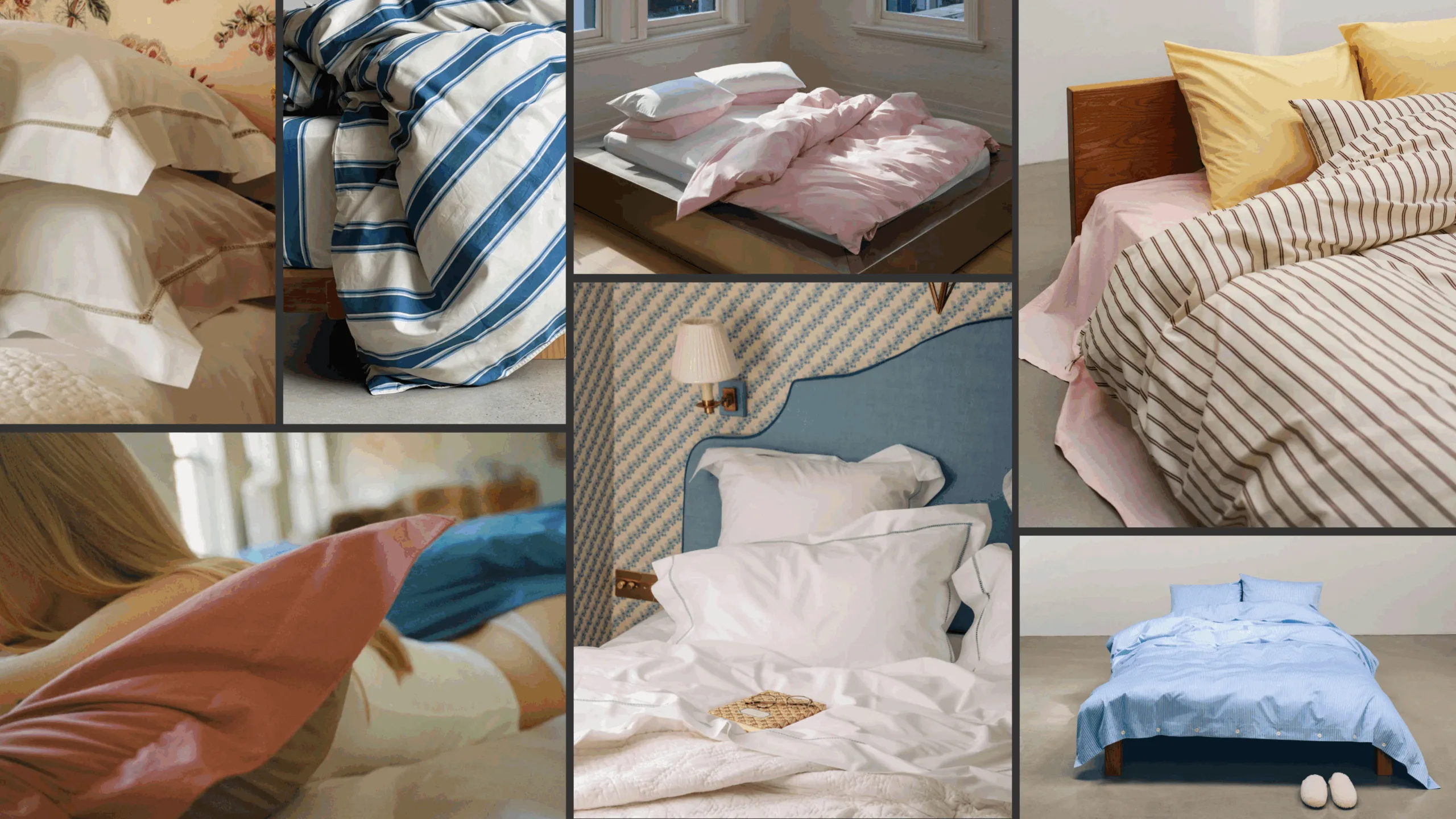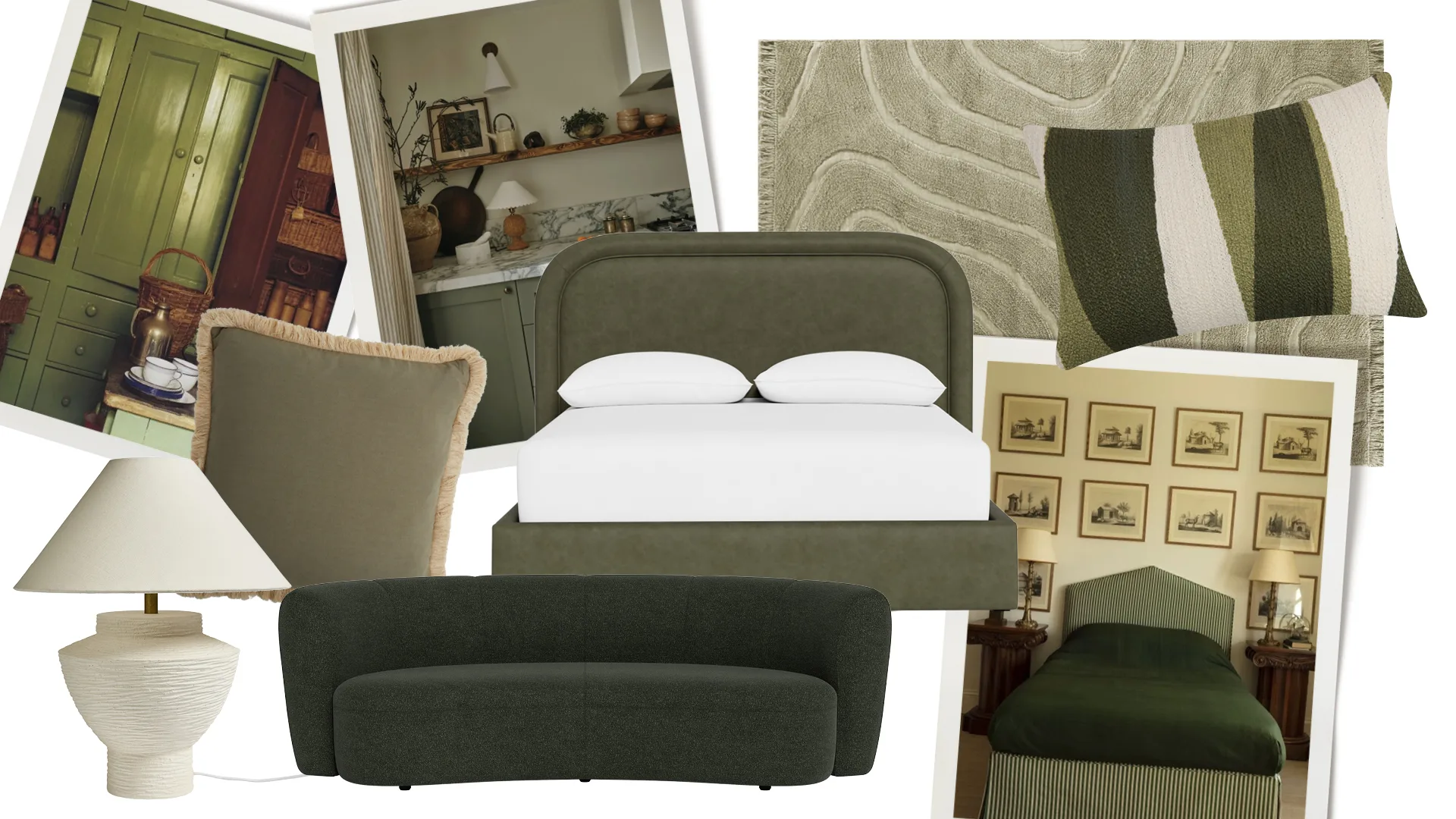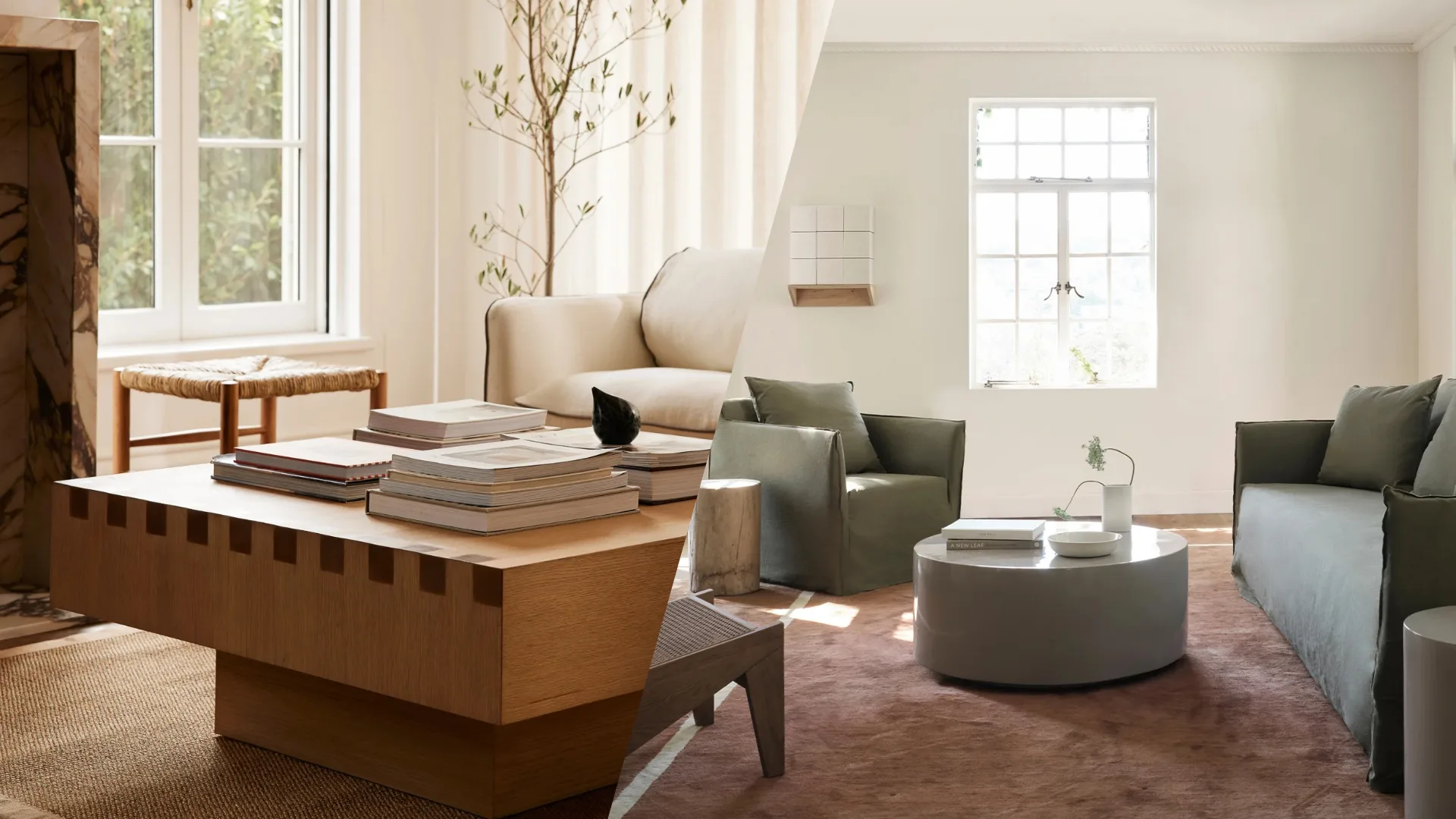When an unrecognised New York number flashed up on Virginia Bates’ phone one evening last year, she ignored it. The caller persisted. “It was Naomi [Campbell],” says the 82-year-old style icon. “She was having a panic about her V&A show [‘Naomi in Fashion’] and wanted me to help style a space that was meant to be a dressing room in a hotel suite. I used things from my archive: props from John Galliano’s shows, gowns, Claridge’s door keys, Louis Vuitton luggage. I threw things around the floor and across furniture – it was meant to look like she had just left after getting ready in a hurry. It worked so well because the rest of the show was pristine and this was beautiful chaos.”
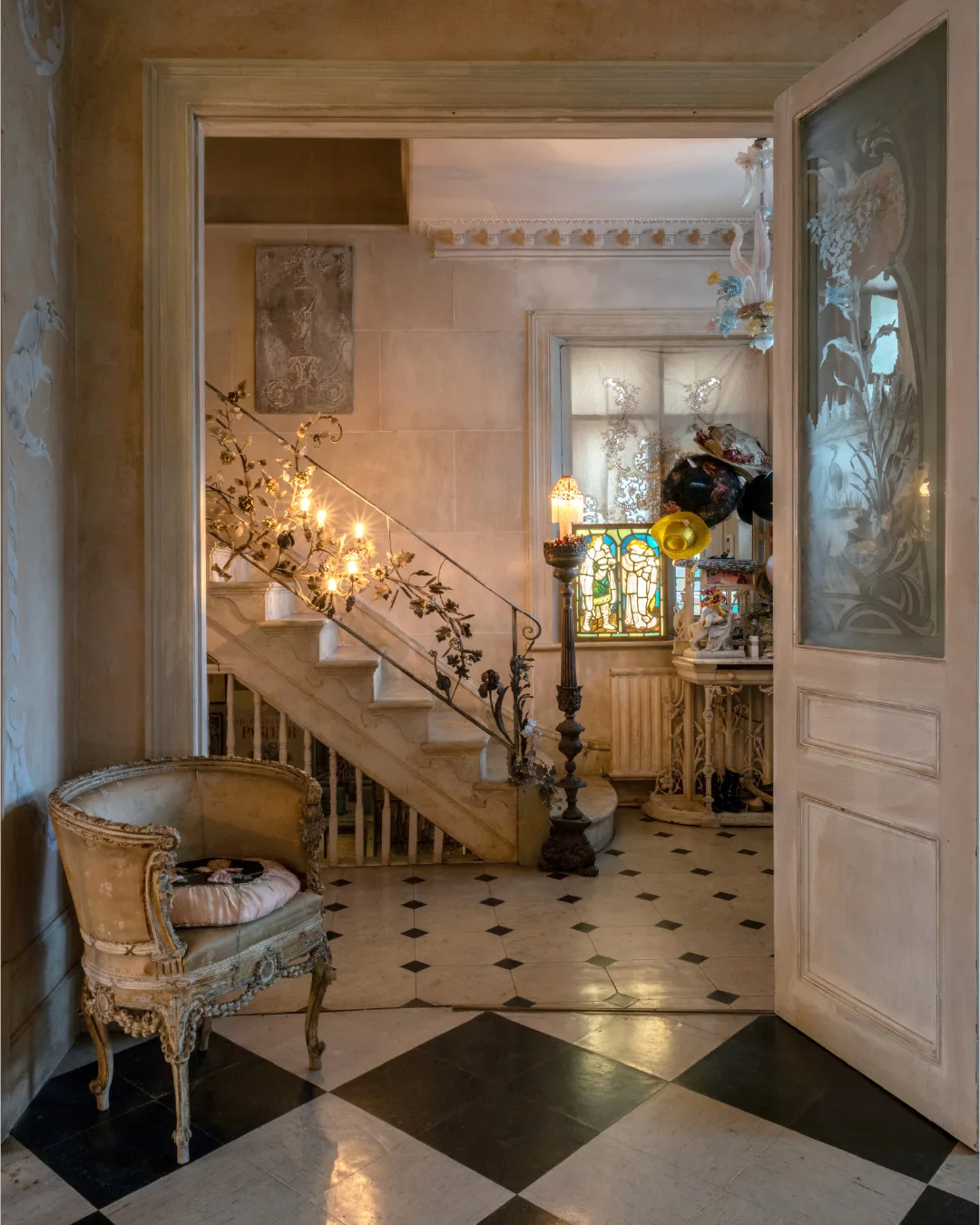
This description could also be used for Virginia’s home in Chiswick, West London as it isn’t just a home, it is fashion history. With stained-glass windows and swathes of extravagantly arranged fine fabrics and lace across three storeys, it’s as if Miss Havisham had a glamorous, upbeat sister with a love of 1920s couture and a frantic social calendar. But what else would you expect from the British fashion icon, known for her eclectic style and influence on vintage fashion, especially through her famed, since-closed shop, Virginia.
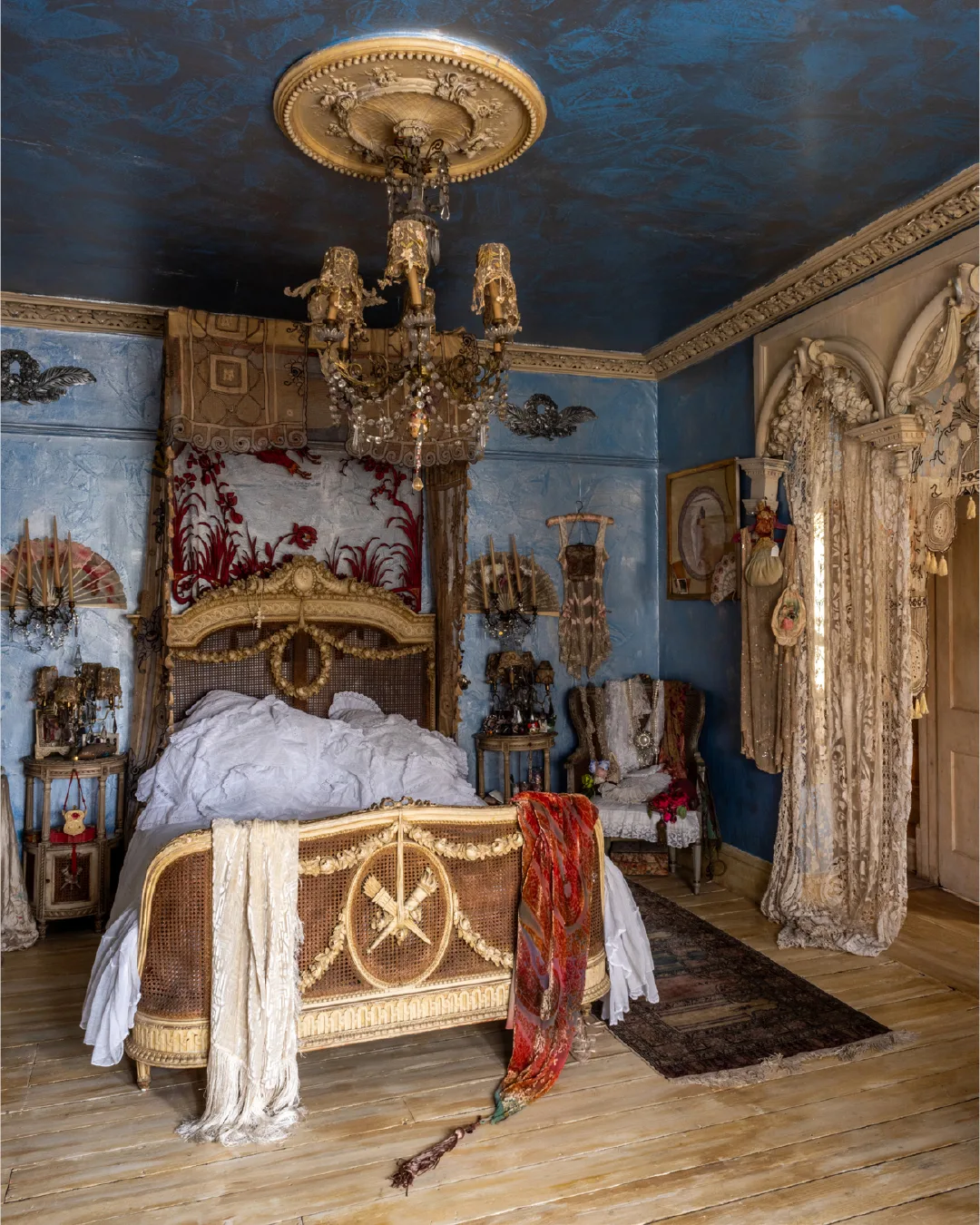
Virginia moved into the house in the long hot summer of 1976 with her husband, actor Ralph Bates. “We bought it from an old lady, who had been here with the occasional lodger, and it was really sad,” she recalls. “The 19th-century detail hadn’t been changed at all, so I saw such potential. It was brilliant.” The couple transformed it with black and white tiled floors, varnished marbled wallpaper, waxed paintwork and trompe-l’oeil touches. Victorian fixtures were uncovered, restored and customised with gold foil. They also added glamorous chandeliers, sconces, mirrors and vast amounts of fabulous architectural salvage, sourced from trips to France and the rag-and-bone men who used to pass Virginia’s boutique in Holland Park.
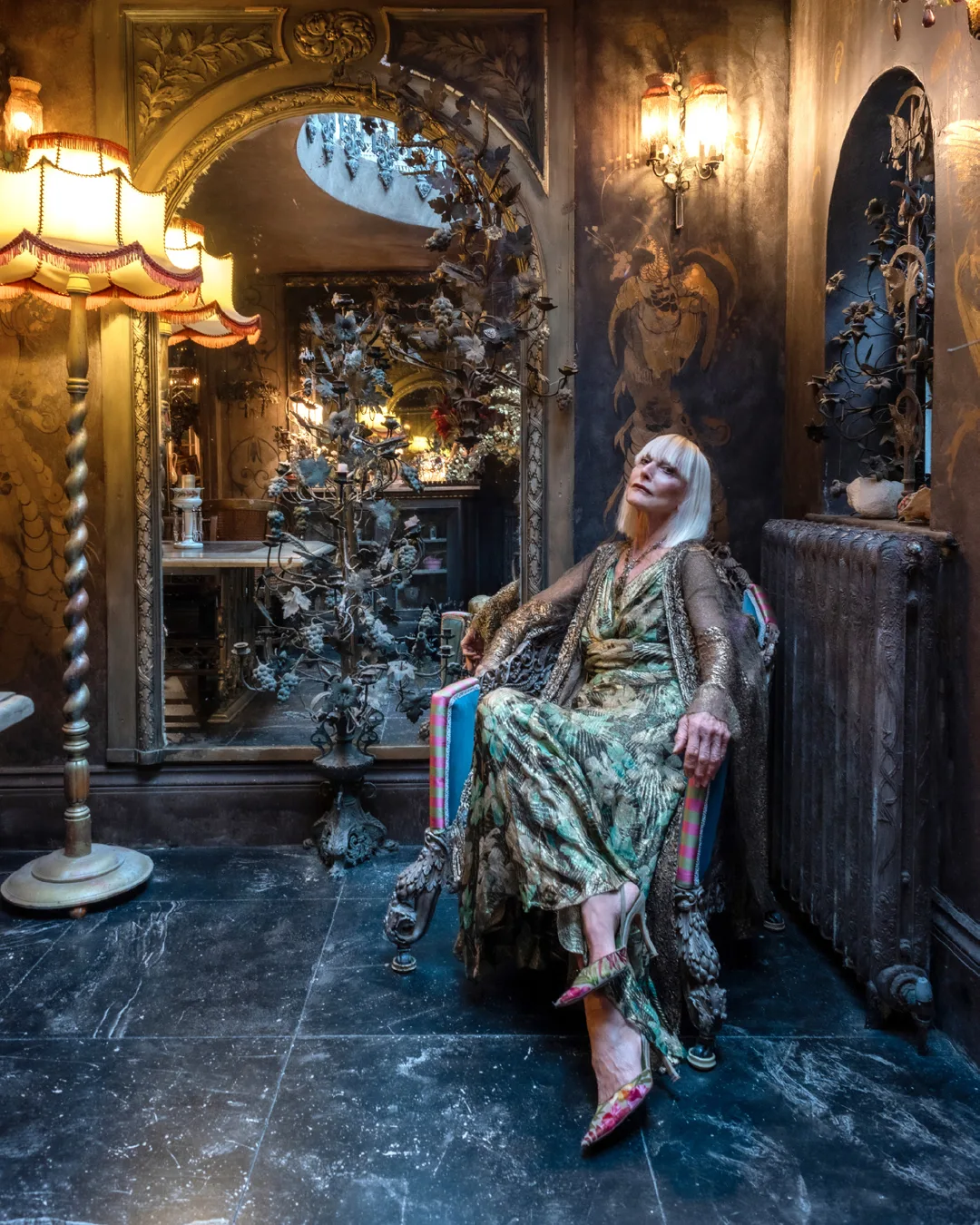
Her eponymous shop had a cult following for 42 years, until she closed it in 2013. “I hate it when people call the clothes ‘vintage,’” she says. “They are beautiful antiques. I closed the shop because I was tired of people complaining they could get something from Top Shop for £9.99.” Virginia still holds pop-ups occasionally, operating in a more specialist capacity. The furniture and fabrics from the old store now reside in her house, which she won’t allow a cleaner to go near. “I do all my own dusting because I don’t trust anyone to move anything around,” she explains.
While there are always new things coming into the house – like cushions from her designer friends Erdem and James Long of Iceberg – much of the place remains as it was when she and Ralph restyled it in the late 1970s. “One of the biggest changes we made to the house was extending the dining room in the basement,” she says. “Then we had a circle cut into the ceiling so we could look up to see the Concorde fly overhead at 10pm every night while having drinks with friends.”

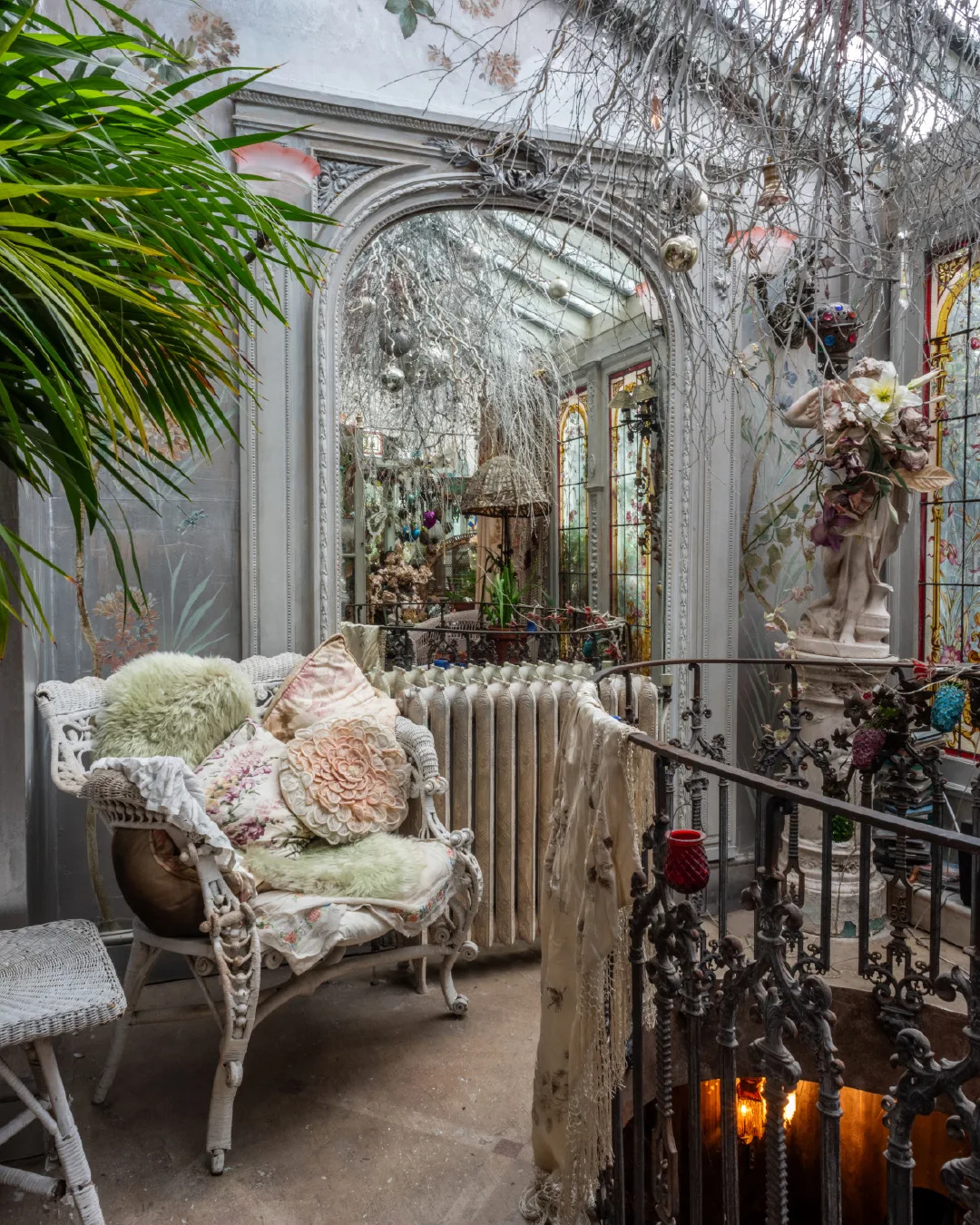
Ralph died from pancreatic cancer aged 51 in 1991, and Virginia is a tireless supporter of related charities, particularly the research fund named after her late husband. Their life together is still in evidence around the house, with small shrines amid the romantic chaos of candles and Tiffany lamps, including framed photos and batches of dried lavender from his grave. There’s nothing macabre about any of it: Virginia clearly still loves him dearly and feels his presence strongly. The two met on the set of the 1971 horror movie Dr Jekyll & Sister Hyde, when she was still the full-time actor Virginia Wetherell, and they quickly became one of the most glamorous couples in London.
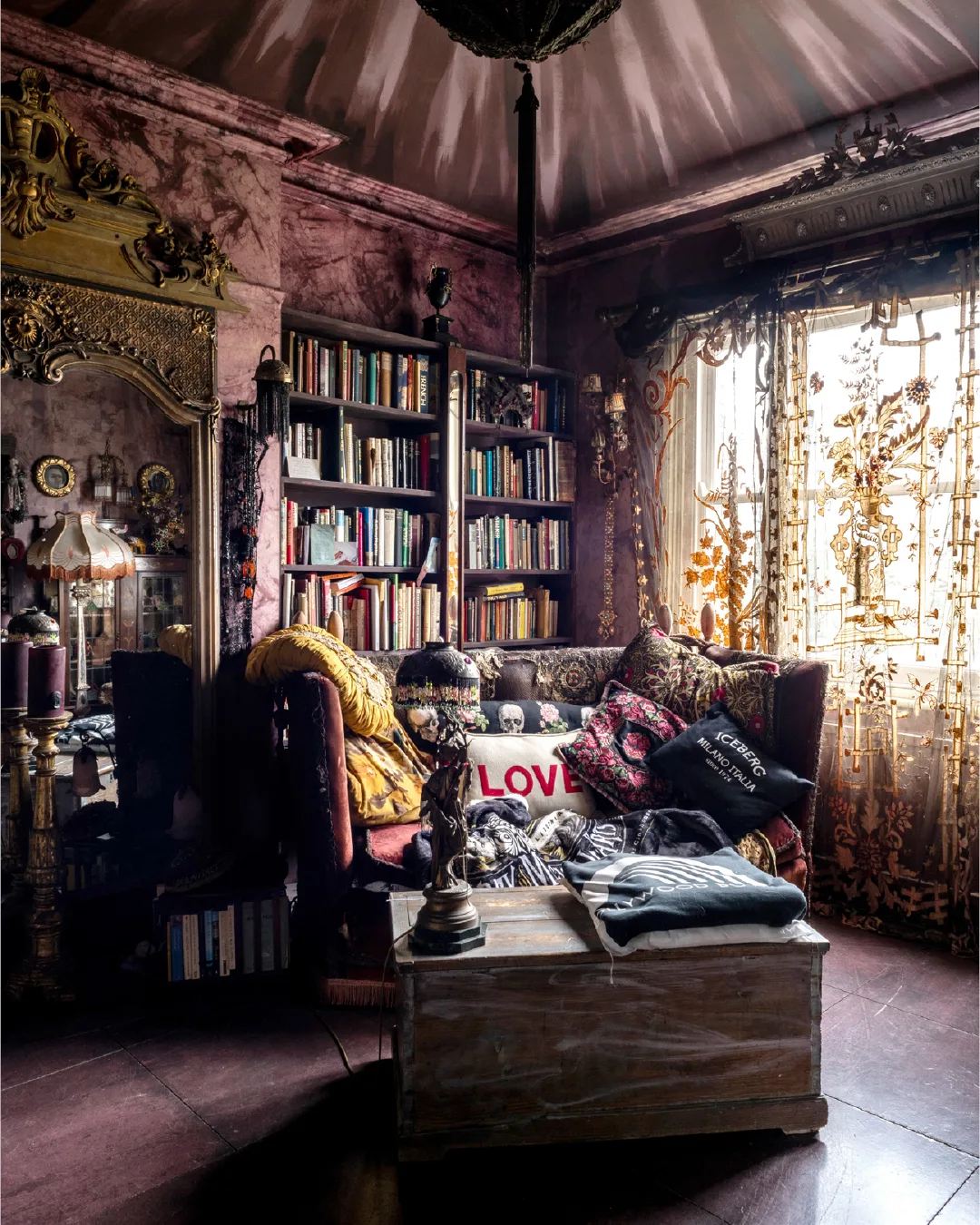
The house was a family home as well as party central – their daughter, Daisy, was born in 1974, and son, Will, in 1977. It was because Virginia was pregnant with Daisy that she had to turn down a role in Stanley Kubrick’s film Barry Lyndon, after working with the auteur on his 1971 classic A Clockwork Orange as a bare-breasted temptress. “Everyone in London wanted to be in that film,” she recalls. “I had so many call-backs. [Stanley] was lovely to film with. He was so obsessed with detail. On my first day of filming, I was sent off with the costume designer to a lingerie store in Norwood to choose 12 pairs of knickers so Stanley could decide which would be the perfect ones for the scene.” Among Virginia’s prized possessions is a rare Clockwork Orange doll that her close friend, milliner Stephen Jones, brought back for her from Tokyo. Stephen is a regular visitor to the house, as are other friends from the fashion world as it’s still a place for gatherings and celebration.
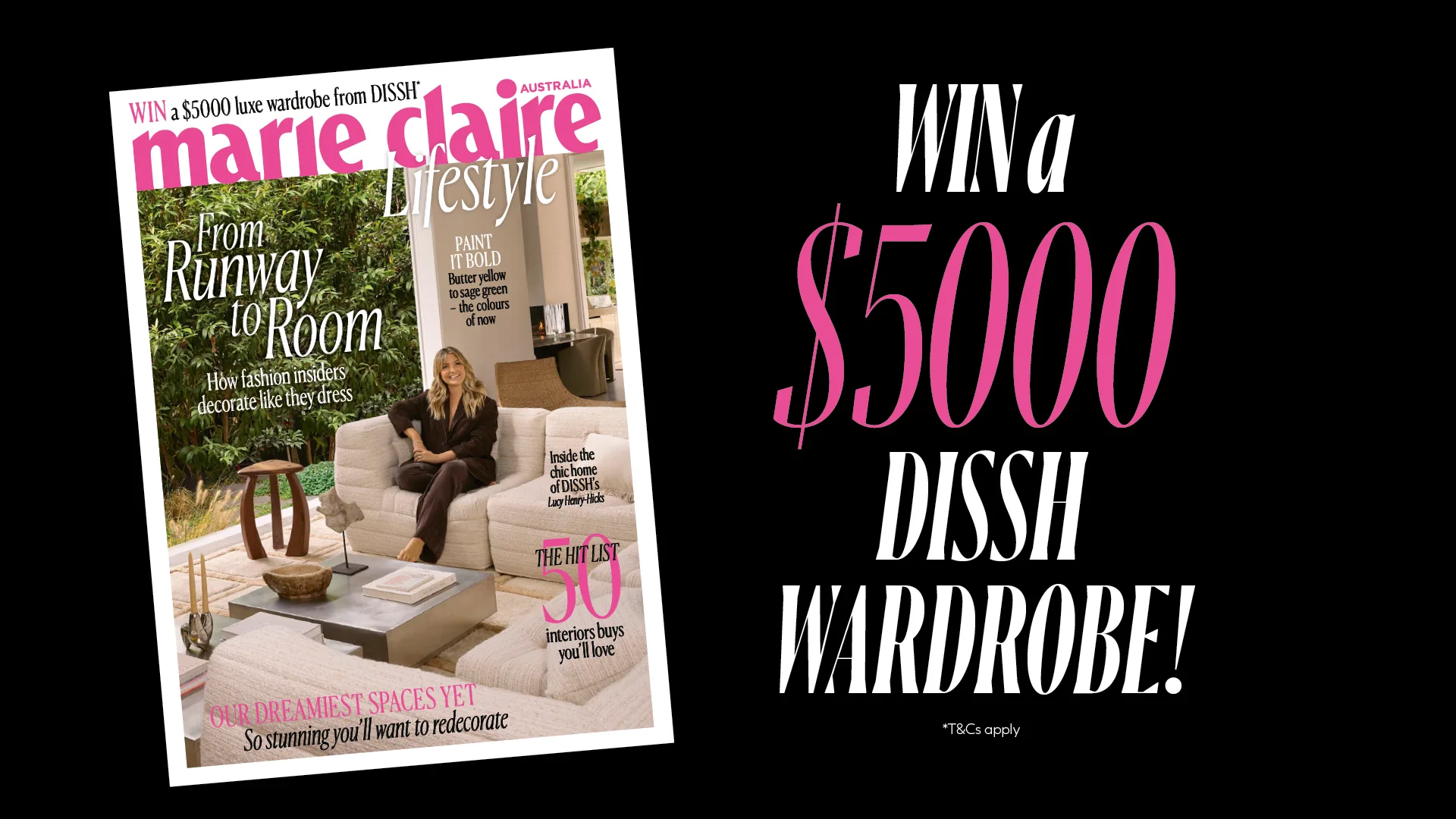
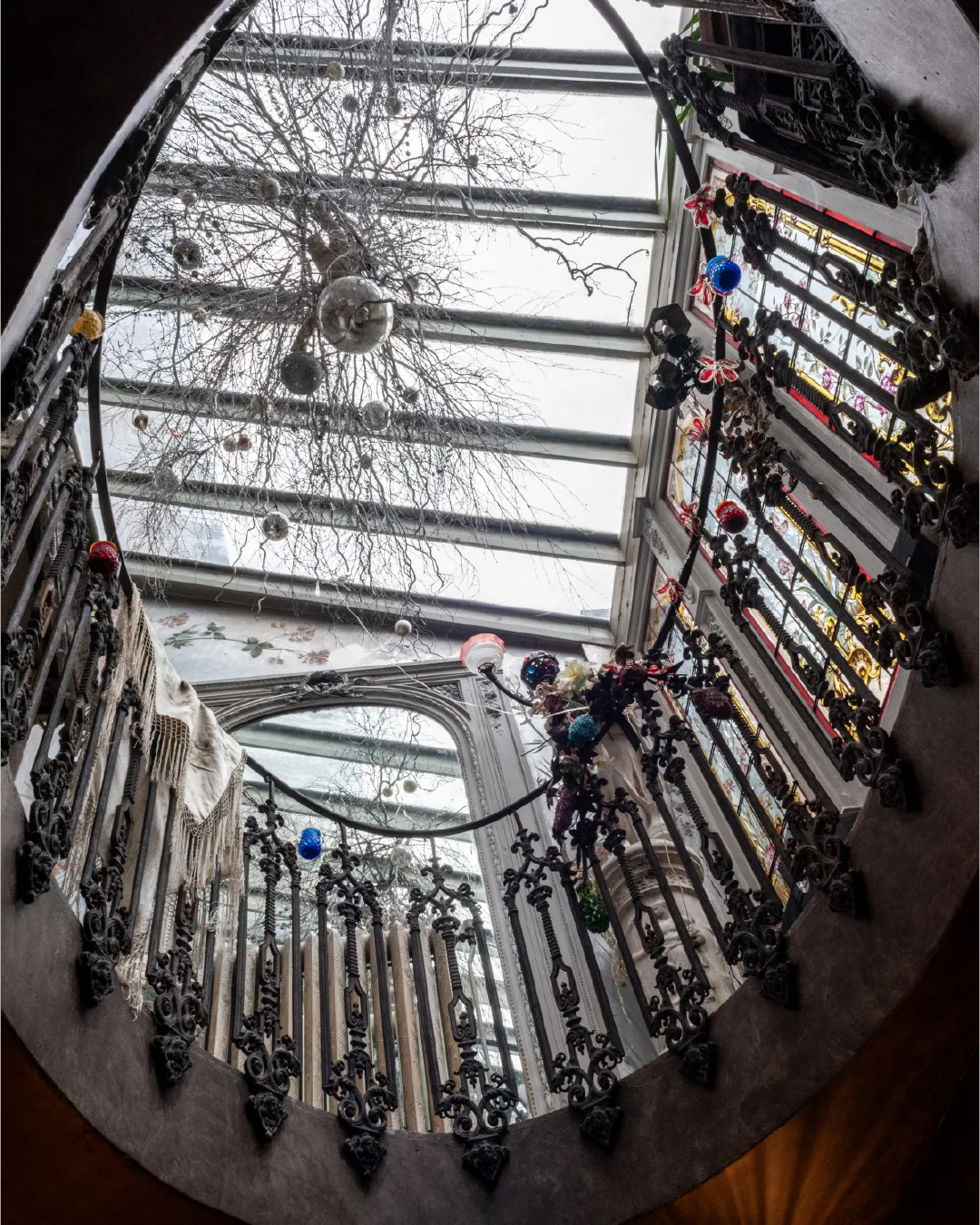
From her role in the Doctor Who series in 1964, to her Hammer horror films and status as fashion muse to the likes of John Galliano, Virginia is a British national treasure. And 50 years after she was last a scream queen, she’s making movies again. “I’ve just done a vampire film,” she tells me. “It’s called Forever Sucks, and my actual son, Will, who is a composer in LA, plays my son. It was written and directed by his wife, the artist Sarah Bereza. I can’t say too much about it or I’ll give away the plot, but I’m a vampire that needs blood, and I had an absolute blast doing it!”
If Virginia channels the same energy on screen in 2025 as she does at home, at parties and in the front row at fashion weeks, it’s going to give the world something iconic, yet again.
See the full story in the new issue of marie claire Lifestyle, on sale now

